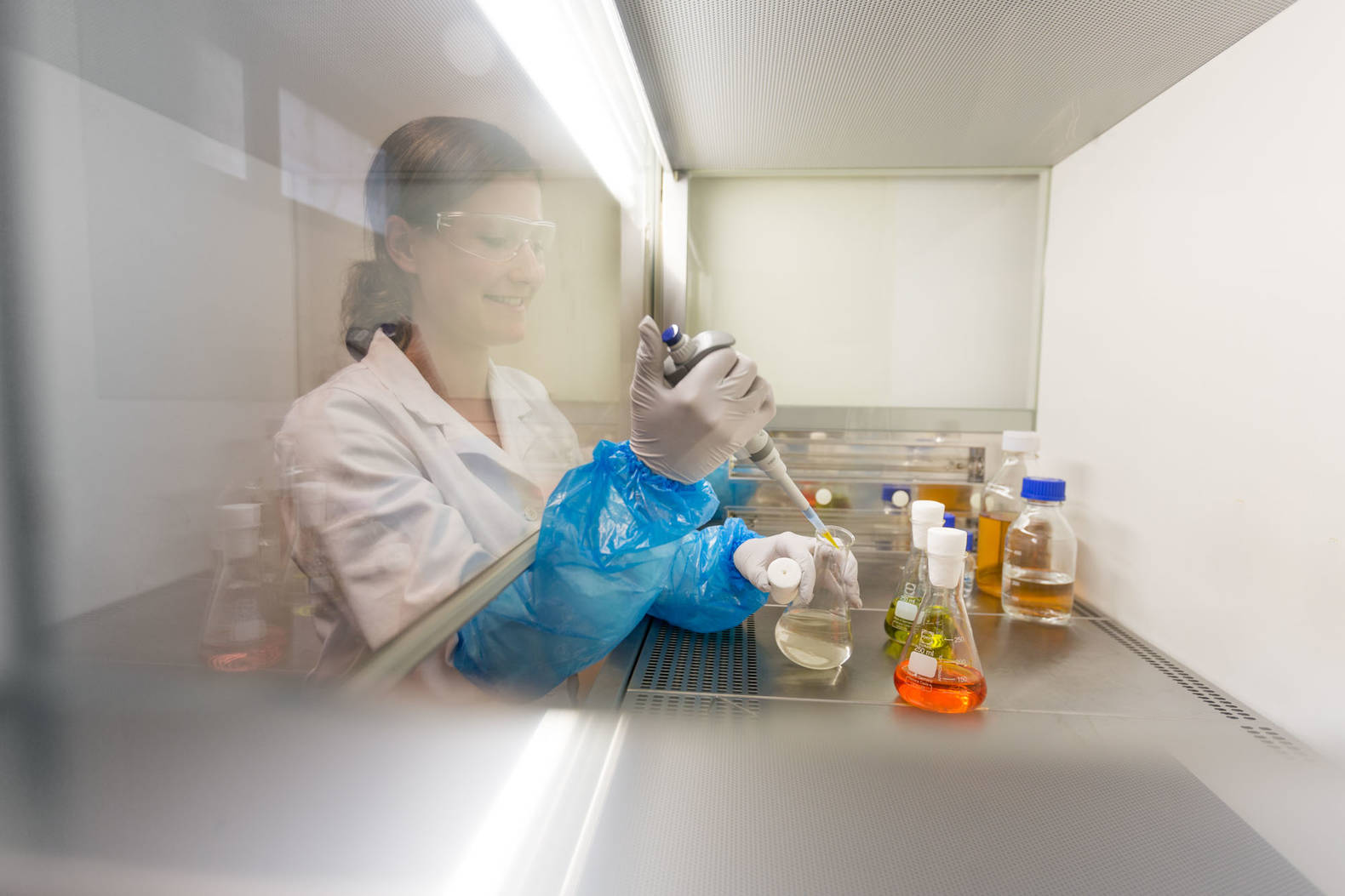Equipment and Methods
In our area, developments, and investigations from laboratory to pilot plant scale can be realised with our own equipment. In addition, cooperations provide access to the equipment of Johannes Kepler University Linz (JKU).
ANALYTICS & MATERIALS TESTING
Lignin and Carbohydrate characterization
Pulp analysis I Wet chemical methods
Pore analysis I Gas adsorption – Hg-porosimeter
Chromatography I HPLC – SEC – HPAEC-PAD – GC-FID
Spectroscopy I UV-VIS – NMR – React-IR inline – ATR/FTIR heatable – Data analysis
Thermal analysis I DSC – OIT, High pressure crucibles, Rapid cooling; HDT-A/B/C
Optical analyses I Microscopy – SEM – XPS
Mechanical analyses I Tensile, flexural and compression tests – Impact strength – Ball drop test – Component testing – Single fiber/fiber yarn/multifilament tensile test
Rheology I MFR
Tensiometry I Contact angle | Surface energy | Surface tension
Potentiostat I Galvanostat
Fiber characterization I Sieve tower – Bulk density – Fiber length distribution via FASEP
(Short-term) Dielectric rigidity I High voltage tester
Reaction to fire tests I Single-flame source test – UL 94 horizontal and vertical burning test
Environmental simulation I Accelerated weathering – Xenon weathering chambers – Climate tests
Heating cooling press 320 × 320 × 200 mm
BIOMASS DIGESTION
Sample preparation I Ball and cutting mill – Freeze dryer – Extraction
Pressure reactors I Steel and glass reactor stations 300 ml, 1000 ml, 3000 ml
Purification and separation I Membrane filtration system laboratory scale – Chromatography column in the laboratory and pilot scale – Ultracentrifuge 8 × 50 ml to
6 x 1000 ml
Functionalization of biopolymers
BIOTECHNOLOGIAL LABORATORY
Biotechnological conversion of process streams
4-fold parallel fermenter station 2000 ml
Anaerobic tent
Standard biotechnology equipment

EXTRUSION/COMPOUNDING
Pulp extrusion line I Counter-rotating, conical twin-screw extruder – output max. 50 kg/h I Standard downstream equipment
Various extrusion tools I including slit capillary rheology
Single-screw extruder – Co-extruder I Output max. 30 kg/h
Simultaneous, parallel twin-screw extruder I Output max. 15 kg/h
Counter-rotating, conical twin-screw extruder I Output max. 5 kg/h
Filament extrusion line I Short and continuous fiber reinforced 3D printing filaments
Multifilament melt spinning machine I Output max. 3.0 kg/h
Pelletizing systems I Hot die face pelletizing – Underwater pelletizing – Strand pelletizing
Measuring kneader I 55 ml – 370 ml
INJECTION MOLDING
Hydraulic injection molding machine I Clamp force 120 t – Dosing volume 160 cm³ – Injection unit for thermoplastics and thermosets
Chemical foaming due to exact mold opening
Various tools I Test specimen geometries – Flow spiral – Plates
Granule dryer I 4 × 30 – 1 × 50 l
Toothed roller mill for recycling trials
3D-PRINTING
FLM 3D printer I Build volume: 390 × 400 × 330 mm
FLM 3D printer I Multi material kit I Build volume: 250 x 210 x 210 mm
3D scanner I measuring fields: 45-500 mm – resolution: 5 megapixels – max. accuracy: 18 μm
HIGH TEMPERATURE PLANTS
High-temperature chamber furnace I up to 2,300 °C – retort 6 l usable volume
Chamber furnace I up to 900 °C – 150 l usable volume
Rotary kiln I up to 1,100 °C
Tube furnace for oxidation/stabilization I up to 300 °C – 5 heating zones of 50 cm each
Tube furnace for LT carbonization I up to 1,050°C – 5 heating zones of 50 cm each
Tube furnace for HT carbonization I up to 1,700°C – 2 heating zones of 50 cm each




